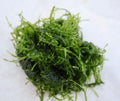How to Use a Water Dechlorinator in Aquariums (Part 2)
Fish: Does Dechlorinator Harm Them?
Most of the time, no. However, there are a few exceptional, one-off instances when it could be hazardous. When chlorine is removed from the water by the dechlorinator's reducing agents, oxygen is used up, and this reaction might be dangerous in tanks with insufficient oxygen. For discus and goldfish aquariums, for example, 90% water changes may be required.Adding a lot of dechlorinator to water that already has little oxygen may further reduce the amount of oxygen available, which might possibly smother your fish and healthy microorganisms.
The majority of aquarium owners work to enhance gas exchange, the process through which carbon dioxide (CO2) leaves and new oxygen enters the tank water, in an effort to stop this from occurring. However, owners of sophisticated planted aquariums that use pressurized CO2 often want to reduce surface agitation. The goal is to reduce gas exchange so that more CO2 may remain in the water and be used by the plants. This is in addition to the fact that plants only take in CO2 during the day and oxygen at night. The dissolved oxygen level in the water will thus be at its lowest if you do a water change early in the morning, just as the lights come on. Your aquatic creatures may suffer if you combine dechlorinator with low-oxygen water.
How many gallons of dechlorinator should I use?
Because every dechlorinator is unique, heed the dosage recommendations on the packaging. For instance, Fritz Complete specifies that 10 liters of water should include 1 ml of dechlorinator. Because various towns use varying concentrations of chlorine in their water, it might be difficult to determine from these instructions what is the proper concentration for your waternator. Because various towns use varying concentrations of chlorine in their water, it might be difficult to determine from these instructions what is the proper concentration for your water. Manufacturers of dechlorinators purposefully provide generic recommendations that, in theory, apply to everyone's tap water since they are unsure of how much chlorine your community consumes.
How soon does the dechlorinator start to work?
Many businesses recommend that you dose the dechlorinator into the tap water in a separate container before adding the water to the aquarium because it takes about 2 to 5 minutes for chlorine and chloramine to be neutralized. Having said that, there have never been any issues when we apply the water conditioner straight to the tank before adding new tap water.
Can you ever over-dechlorinate a fish tank?
You can dose up to five times the advised amount in a 24-hour period to treat extremely high levels of chloramine, nitrite, or other toxic chemicals. With such a wide range, there is a lot of room for mistakes. Just bear in mind that dechlorinators in powerful concentrations will quickly reduce the amount of dissolved oxygen; therefore, it may be best to add an air stone for the next 3–4 hours to increase water oxygenation.
It wouldn't hurt to research how much chlorine is typically used in your municipality and conduct some tests at home. If you learn that your community utilizes 2 ppm (parts per million) of chlorine, for example, Does the chlorine test show 0 ppm if you perform a 30% water change on a 100-gallon aquarium and dose 3 pumps of Fritz Complete into 30 gallons of tap water? Can you get rid of the chlorine completely by using less water conditioner, or do you need to dose more pumps?The bottom line is to test your water, use the least amount of dechlorinator possible, and watch out for your fish's oxygen levels.
We frequently get asked what the best dechlorinator is to use, and to be completely honest, picking a good choice of water conditioner is a wise decision due to its super simple pump head that can treat 10 gallons of water at once. There's no need to carefully measure out liquid before pouring it into a bottle cap. Just a few quick pumps, and you’re done.
















